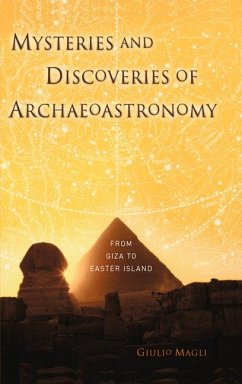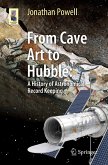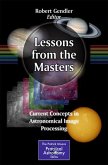Finally, having formulated his hypothesis, Professor Magli returns to visit one specific place in detail, searching for proof. This in-depth examination studies the most compelling, the most intensively studied, the most famous and, until recently, the most misunderstood sacred landscape on the planet - Giza, in Egypt. The archaeoastronomical analysis of the orientation of the Giza pyramids leads to the hypothesis that the pyramids of Cheops and Chephren belong to the same construction project.
Dieser Download kann aus rechtlichen Gründen nur mit Rechnungsadresse in A, B, BG, CY, CZ, D, DK, EW, E, FIN, F, GR, HR, H, IRL, I, LT, L, LR, M, NL, PL, P, R, S, SLO, SK ausgeliefert werden.
"Magli ... a theoretical physicist by training, turned to archeoastronomy a decade ago, the topic that marries astronomy to architecture, landscape, ancient astronomical lore, and culture. In this work, a translation of the 2005 Italian version, the author begins with what might be considered standard subjects for archeoastronomy: a survey of a wide range of ancient cultures and their remnants ... . Two appendixes ... and excellent line drawings and photographs are useful. ... Summing Up: Highly recommended. General readers." (M.-K. Hemenway, Choice, Vol. 47 (2), October, 2009)
"Professor Magli ... graduated to relativistic astrophysics, before 'seeing the light'. His book ... takes us on a guided tour of the world's archaeoastronomical monuments. ... His book is a comprehensive, well-illustrated, well-referenced, easily accessible intellectual joy. ... The constructors of Stonehenge and the Egyptian pyramids lived only a hundred or so generations ago. ... The quest to understand their astronomy, their minds, and their motivations is difficult and rewarding and worthy of encouragement. ... Magli's excellent book is an ideal place to start." (David W. Hughes, The Observatory, Vol. 129 (1213), December, 2009)









